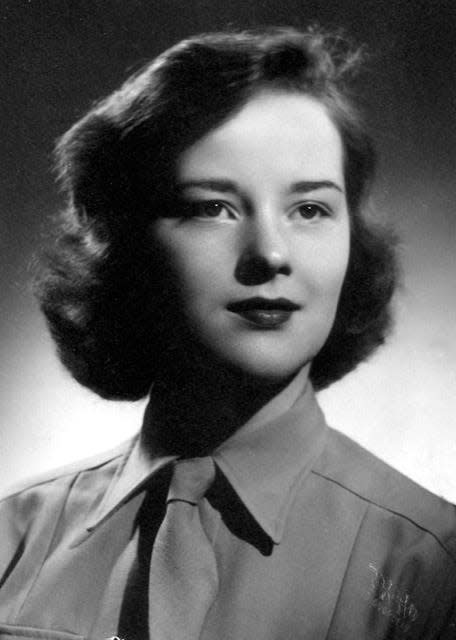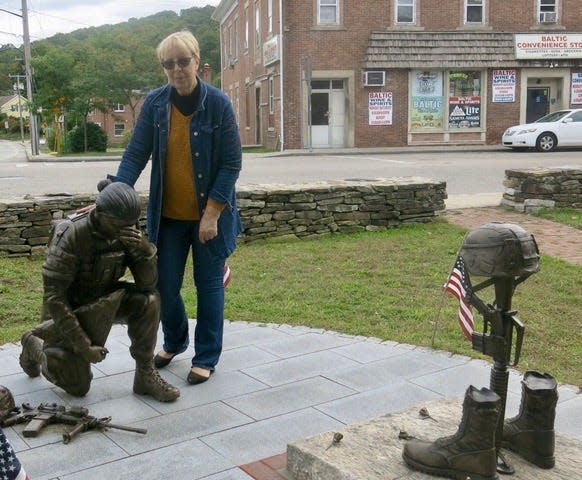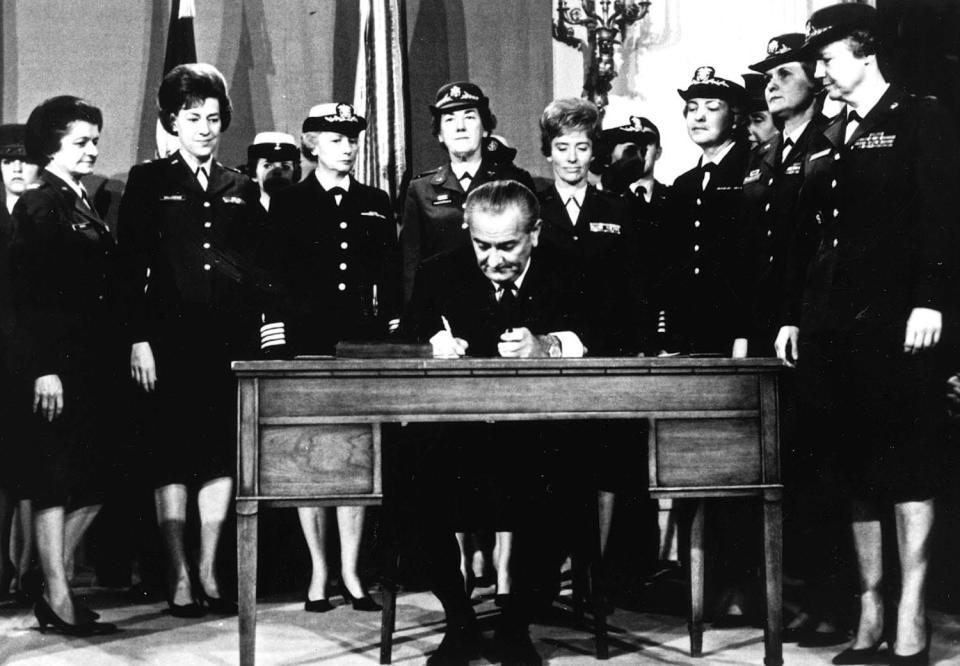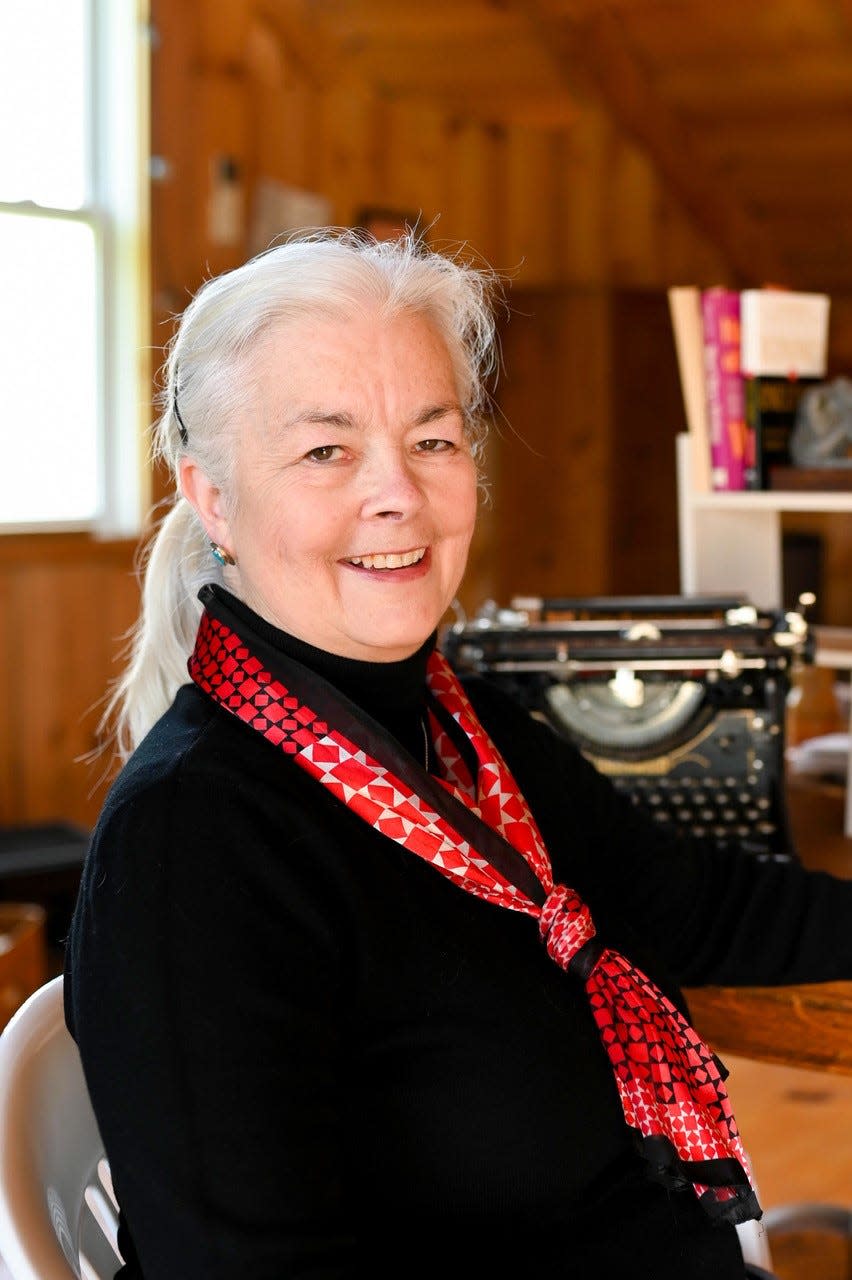Women served in WWII long before we valued them in the military. My mother was one.
My mother died decades before it was considered cool to have been a member of the "Greatest Generation," years before anyone coined that term, long before her World War II service garnered attention. By her death in 1978, there were still millions alive of the 16 million who served in that war.
About 400,000 women were among those who served in the World War II Army, Navy, Coast Guard or Marine Corps, Phyllis Wilson, president of the Military Women’s Memorial in Arlington, Virginia, told me. Those women formed the first frail beginnings of what would become widespread acceptance of women in all spheres of life.
This was far from the case in May 1941. Rep. Edith Nourse Rogers, R-Mass., authored legislation creating the Women’s Army Auxiliary Corps (WAAC).
'Are we to deny the patriotic, courageous women of America?'
Some lawmakers were horrified. Connecticut’s Sen. Francis Maloney said it would cast "a shadow on the sanctity of the home.” Kentucky’s Rep. Beverly Vincent, a veteran of World War I, sputtered that the proposal was “the worst bill that has been introduced in this Congress.”
Opinions in your inbox: Get exclusive access to our columnists and the best of our columns every day
But Sen. Robert Reynolds of North Carolina countered, “Are we to deny the patriotic, courageous women of America the opportunity of participating in this war?" He continued, “I ask every member of this body to permit the women of America to do that which they are desirous of doing.”
They did, and the WAAC opened its doors. Women proved their worth. In 1943, in a lopsided vote, Congress authorized the Women’s Army Corps (WAC), making women full members of the military. By the time the war ended, more than 150,000 women had joined the Army.
My mother, the Army veteran
My mother was one. Even as I smiled reading the congressional debate of 80 years ago, I wondered how I should mark what would have been my mother’s 100th birthday this year.

I haven’t had a drink for 36 years, but when I think of my mother, her remembered presence sparkles like champagne. She was a relentless optimist, always laughing and ready with a wisecrack. Her habit of reading at least a book a week made her an erudite conversationalist. Mom was a gifted sculptor, and I have her creations all over my house, but having six kids in seven years after she married my father limited her energy for artistic pursuits.
Yet as I pored over another decades-old document, the diary I kept during the last few months she was alive, I was struck by how often my mother returned in conversation to her Army service. She spoke of the four bases on which she served over two years. She regretted not being sent overseas, but saw a wider world beyond her hometown of Buffalo, New York.
Mom always thought women should be subject to the military draft along with men. Her service gave her confidence in the talents of women, and she repeatedly told my three sisters and me that we could aspire to anything.
There's no deadline on women's equality: Add the Equal Rights Amendment to the Constitution
Mom would have loved a beautiful, and unusual, veterans memorial in the nearby village of Baltic, within the town of Sprague, Connecticut. It features a bronze statue, life-size, of a woman combat soldier in military fatigues. Her rifle lies on the ground beside her as she genuflects in remembrance of a deceased comrade before an upturned rifle, in bronze, with bayonet plunged in the ground, helmet draped over its gun stock.

There I met state Sen. Cathy Osten, herself a former Army sergeant. She was the town’s first selectwoman (the New England equivalent of mayor) when the statue was dedicated in 2019. Osten was the only female member of the town’s American Legion chapter when the membership voted to commission a statue of a female combat soldier at the town’s Veterans Memorial Park and raised money to pay for it.
“What the statue says to women who served in the military is that you are recognized; we see what you do," Osten told me. The men were enthusiastic about a statue representing the pain of combat and the contributions of women, she said.
Cataloguing stories of military women
It’s a far cry from the the message the military gave women after their World War II service. The military closed to women once again, until 1948. Congress then capped women’s membership at 2% of the military, limited military specialties open to women and barred them from becoming admirals or generals.

The limits on percentage of women admitted to the military and the ban on promotions ended by 1970. The nation’s military academies opened to women in 1976. Barriers for most military specialties fell in the mid-1990s.
The bans on women serving on submarines or in combat fell in 2010 and 2015, respectively. Now women make up 20% of the military.
Opinion alerts: Get columns from your favorite columnists + expert analysis on top issues, delivered straight to your device through the USA TODAY app. Don't have the app? Download it for free from your app store.
To ensure women’s contributions will not be forgotten, the Military Women’s Memorial has catalogued the stories of more than 304,000 of the 3 million American women so far who have entered the military. Its ambitious goal is to record the narratives of all women who served.
We added my mother to the records, for all of her descendants to read: Jane Irene Murray, Tech 5 (the equivalent of corporal) 1944 to 1946.

Yet as I pondered, again, how best to celebrate her 100th birthday, I figured out what was bothering me.
Finally, a tribute befitting a soldier
When my mother died, we followed her wishes: cremation, no wake, just a funeral Mass. We had no flag-draped coffin to honor her, no taps played over her grave, no soldiers to solemnly fold the flag she loved.
‘Remembrance is vital for our society’: Reflection on the 40th anniversary of the Vietnam Veterans Memorial
So I filled out a form on the website of my congressman, Rep. Joe Courtney, D-Conn., and requested that a flag be flown over the U.S. Capitol, then mailed to me. (The service is open to anyone for a small fee to pay for the flag and shipping.) The exact date could not be guaranteed. I requested my mother’s birthday, and I got lucky.
On Aug. 19, 2022, a century after my mother was born, the flag she served flew over the U.S. Capitol.
She would have been proud.
Maura Casey is a former editorial writer for The New York Times.
You can read diverse opinions from our Board of Contributors and other writers on the Opinion front page, on Twitter @usatodayopinion and in our daily Opinion newsletter. To respond to a column, submit a comment to letters@usatoday.com.
This article originally appeared on USA TODAY: Veterans Day: Remember those who served in WWII. My mother included.

